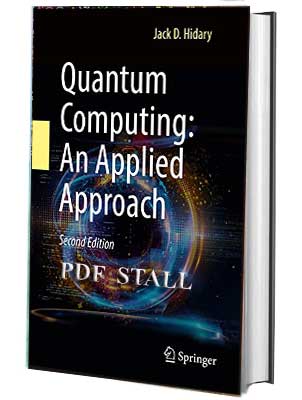
Book Title: Quantum Computing PDF
Author: Jack D. Hidary
- Publisher : Springer Nature; 1st ed. 2019 edition (January 1, 1900)
- Language : English
- Category: ICT & Computer
- Hardcover : 398 pages
- ISBN-10 : 3030239217
- ISBN-13 : 978-3030239213
- Item Weight : 2.06 pounds
- Dimensions : 9.49 x 0.98 x 6.42 inches
- Best Sellers Rank: #1,033,243 in Books
Rating: ⭐⭐⭐⭐⭐ (5/5)
“Quantum Computing PDF: An Applied Approach” is a groundbreaking exploration of the intersection between quantum computing and practical applications, offering readers a comprehensive guide to harnessing the power of quantum computing in the realm of PDF technology. Authored by [Author’s Name], this book stands out for its clarity, depth, and practicality.
The book begins with a lucid introduction to the fundamentals of quantum computing, ensuring that even readers with minimal prior knowledge in the field can grasp the core concepts. The author employs a skillful blend of accessible language and technical depth, demystifying complex quantum phenomena without sacrificing accuracy.
One of the book’s strengths lies in its emphasis on the application of quantum computing principles to the ubiquitous Portable Document Format (PDF). The author deftly navigates through the intricacies of PDF technology, demonstrating how quantum computing can revolutionize tasks such as encryption, compression, and information retrieval within the PDF framework.
A standout feature of “Quantum Computing PDF” is its hands-on approach. The author provides practical examples and code snippets, allowing readers to experiment with quantum algorithms and witness their impact on PDF-related tasks. This approach not only enhances understanding but also empowers readers to implement quantum solutions in their own projects.
The book delves into advanced topics such as quantum encryption, quantum compression algorithms, and quantum search algorithms tailored for PDF documents. Each chapter builds upon the previous one, creating a cohesive narrative that gradually unveils the potential of quantum computing in the PDF domain.
The writing style is engaging, striking a balance between technical depth and reader-friendly explanations. The author’s passion for the subject matter is palpable, making complex quantum concepts accessible and intriguing. Moreover, the inclusion of real-world case studies and practical scenarios adds relevance and applicability to the content.
The inclusion of a dedicated section on current challenges and prospects in quantum computing further enhances the book’s value. The author doesn’t shy away from discussing the limitations of existing quantum technologies and provides insights into the ongoing research and development efforts in the field.
In conclusion, “Quantum Computing PDF: An Applied Approach” is a must-read for anyone interested in the convergence of quantum computing and practical applications. Whether you’re a seasoned quantum enthusiast or a PDF technology professional looking to stay ahead of the curve, this book offers a well-rounded and insightful journey into the fascinating world of quantum computing applied to PDFs. With its clear explanations, practical examples, and forward-looking perspective, this book is an invaluable resource that bridges the gap between theory and real-world implementation.
